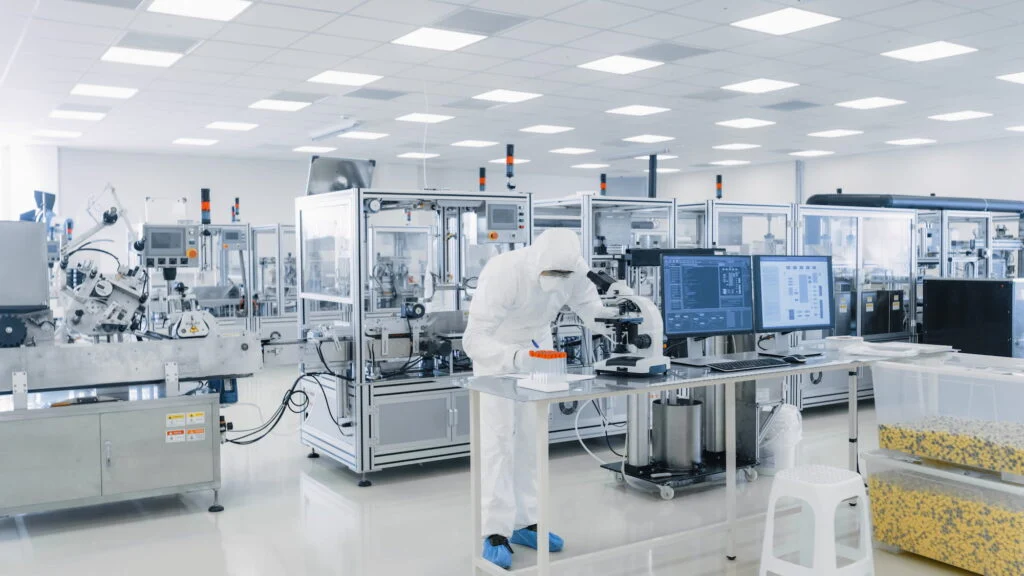Indian pharmaceutical laboratories are high-stakes environments where precision, safety and future are critical. Every process, from handling reactive chemicals to conducting delicate experiments, hinges on uninterrupted operations. Yet, power outages remain an unpredictable challenge, threatening both worker safety and the quality of ongoing work.
Upgrading existing lighting systems with emergency solutions, like LED emergency drivers or fluorescent ballasts, provides an effective safeguard against these risks. These systems ensure that laboratories remain well-lit during outages, preserving safety standards and preventing disruptions. In this article, we’ll explore how modern emergency lighting solutions are redefining safety practices in pharmaceutical labs and the tangible benefits they offer.
Why Emergency Lighting is Essential for Pharmaceutical Labs?
Emergency lighting is essential in pharmaceutical laboratories to ensure safety, prevent disruptions, and meet compliance standards. Labs often handle hazardous chemicals and operate sensitive equipment requiring precision.
A sudden power failure can lead to chemical spills, equipment damage, or injuries due to poor visibility. Emergency lighting, such as emergency light ballasts or LED driver emergency systems, ensures these risks are mitigated by maintaining consistent illumination.
Furthermore, laboratories operate under strict regulatory frameworks mandating emergency preparedness. Non-compliance can result in fines or operational delays. Reliable lighting solutions like LED fluorescent ballasts help labs meet these standards while safeguarding their employees.
Emergency lighting also protects the continuity of processes. Critical experiments and storage systems remain unaffected by outages, preventing data loss and financial setbacks. Additionally, energy-efficient solutions such as emergency LED ballasts align with sustainability goals, making them an environmentally responsible choice.
Investing in advanced emergency lighting systems ensures pharmaceutical facilities operate smoothly and safely, even during unexpected power disruptions. This improves safety, maintains productivity, and supports regulatory adherence, offering a long-term advantage for businesses.
Read More: Emergency Lighting in Healthcare: Saving Lives During Power Outages

Upgrading emergency lighting systems in pharmaceutical laboratories isn’t just about ticking off safety regulations, it’s a smart investment in safety, efficiency, and long-term growth. Laboratories are intricate environments where the margin for error is minimal, and power disruptions can lead to serious consequences.
With emergency lighting upgrades, such as retrofitting LED or fluorescent systems with advanced ballasts, labs can ensure both compliance and operational excellence. Here’s how these upgrades benefit labs:
1. Enhanced Safety During Power Interruptions
Pharmaceutical labs often handle sensitive processes and hazardous materials, making consistent lighting crucial during emergencies. Installing emergency LED ballasts ensures that operations remain visible and safe, even during power outages.
This reduces risks like accidental spills, mishandling of equipment, and compromised test results. Employees can confidently continue essential tasks without panic or confusion in dimly lit conditions.
2. Cost-Efficient Modernization
Replacing entire lighting systems is costly, but upgrading existing setups with advanced emergency drivers offers a more economical solution. By retrofitting fluorescent ballasts with emergency-compatible ones, labs can modernize their infrastructure without overhauling their budget. This approach minimizes downtime and extends the lifespan of the current lighting setup, proving to be a win-win.
3. Compliance with Stringent Safety Standards
Regulations governing pharmaceutical operations are becoming increasingly strict, especially concerning safety measures. Emergency lighting upgrades not only meet but often exceed these standards, ensuring labs remain operational during inspections or audits.
Adopting these solutions demonstrates a proactive approach to safety, strengthening the lab’s reputation among regulatory bodies and clients.
4. Improved Energy Efficiency and Sustainability
Emergency lighting drivers, such as LED fluorescent ballasts, are designed to be highly energy-efficient. During regular operations and emergencies, they consume less energy while maintaining optimal brightness. This efficiency not only reduces electricity costs but also aligns labs with sustainability goals, showcasing environmental responsibility to stakeholders.
5. Smooth Integration with Existing Systems
Upgraded emergency lighting solutions are versatile enough to integrate with both fluorescent and LED setups. This compatibility ensures that labs with mixed lighting systems can implement upgrades without unnecessary technical challenges. It allows for a smooth transition to improved safety standards, with minimal disruption to daily operations.
Also Read: How Switching to Intelligent LED Emergency Lights Can Benefit You

When it comes to upgrading lighting systems in pharmaceutical laboratories, ensuring safety, energy efficiency, and regulatory compliance is crucial. Here are a few practical steps that will help facilitate a smooth transition to an improved lighting setup:
Not sure what you required for your lightining project ?
Get in touch with us for FREE consultation.